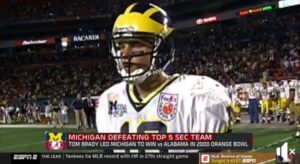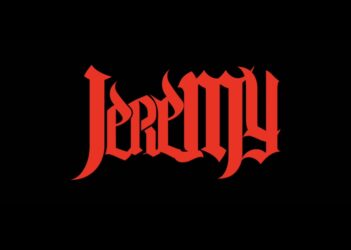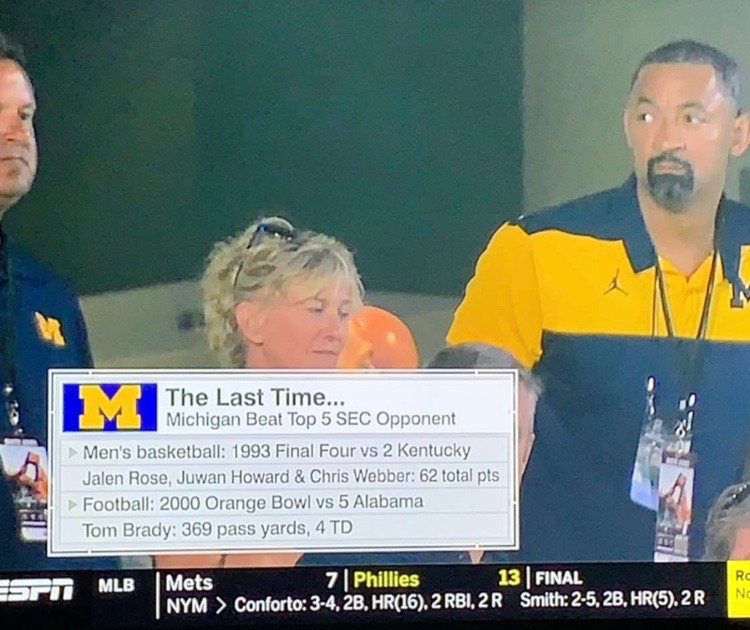On Some Beautiful Summer Day in the Mid 2000s: Eyeing the family printer with enthusiasm, I watched as my crisp, requested sheet slid from out below. Published on the white piece of paper was an official bracket of the College World Series.
Eager to follow along with the tournament that takes place every year during my birthday month (June) in Omaha, Nebraska, I studied the dates of each contest to ensure I wouldn’t miss a match. How I gained interest in the eight-team, double elimination formatted tournament was by way of my established obsession for MLB, plus my newfound appreciation for college baseball. The latter love came as a result of the hours I logged on the sports video game, MVP 06: NCAA Baseball on my Play Station 2. It was the first ever college baseball video game, and boy did they fly out the gate with some heat. As a user, you could pick from 128 Division 1 teams, and play games in 18 different ballparks, including Rosenblatt Stadium, the former home of the College World Series . If you got sick of the set list of stadiums, they had a feature, ‘Create-a-Ballpark’ which allowed you, as the gamer, to put your architect hat on and design a park from scratch. Oh, and aside from the actual features, this game had arguably the greatest sports video game soundtrack. All of the songs (primarily rock) felt like summer baseball, and enhanced the experience 10x.
The in-game experience was special for a plethora of reasons. Number one, the aluminum bats. The crack of the barrel sound that I would hear in my MLB video games was cool, but the ‘PING’ noise that came whenever I made good contact in MVP 06: NCAA Baseball was even cooler.
Another reason why the game stood out was because of its new, “Load and Fire” batting system. From the batter’s box, instead of just tapping a button on your controller to hit the pitch, which was the standard action at this time for baseball games, you had to pull the right analog stick down to put the weight on the player’s backside, and then flick it up to follow through with power. It gave it more of a realistic feel, and it allowed the user to take more pride in lacing a ball.
Taking advantage of this innovative experience, I would enter the ‘Road to Omaha’ mode, which would allow you to pick from one of the advertised schools, and play through a 40-game season, with the end-goal being a championship in Omaha. I was l10 or 11 at the time, so the music, blended with the PING, mixed with this interactive mode, was heaven for a baseball lover like myself.
As mentioned at the top, once I got hooked on the electric vibes that the video game introduced me to, I began following along with the real-life atmosphere. Though it doesn’t get the same level of attention that March Madness gets, the College World Series is a beautiful, dramatic, festive tournament that ushers in summer to perfection. It’s baseball in Nebraska, for all the marbles. What could be better?
Fast-forward a decade or so. During my first few months as a Sports Content Researcher at ESPN in Charlotte, home of the SEC Network, almost all of my published material was centered around football and basketball. So much so, that I had almost forgotten how powerful the SEC was on the diamond. Once March Madness was over, my focus shifted, and I started studying up on college baseball. In a matter of minutes, while scanning over the premier squads in the conference, I realized that I would have real shot at getting the opportunity to create content for the CWS in Omaha. All I needed was for one of these supreme squads to make a run, and then from there, it would be up to me to find a way to get an idea into the broadcast.
As luck would have it, four of the eight teams who punched their ticket to Omaha were from the SEC (Vanderbilt, Arkansas, Auburn, and Mississippi State). Eyeballing the 2019 bracket, akin to how I sensed it in the mid-2000s with such intrigue, I couldn’t help but express excitement for the potential chance to create on the biggest stage.
The tourney started out rough for my beloved conference. Both Arkansas and Auburn dropped their first two contests, eliminating them from the field. Auburn’s first loss came to Mississippi State, who, after defeating the Tigers, dropped a contest to Louisville, which put them into must-win mode against Vanderbilt. This led to more SEC on SEC crime, as Vandy knocked them. Just like that, three of my four squads were zapped from contention.
Yet, sometimes in life, all you need is one. One person to give a chance, one idea to be great, and, in this case, one team to bank on making it to the championship. After knocking out Mississippi State, the Commodores beat Louisville, and were set to play the Michigan Wolverines in the CWS Finals. A best of three championship round, that began just days after both teams clinched their respective spot.
If you’ve ever watched a sports broadcast, or a full highlight of a notable contest, you’d know that it’s very difficult to successfully pitch a creative idea to be referenced while the game is on display. Most of the time, all of the attention is on the actual substance, not ingenious-based thoughts surrounding the action. However, if you look hard enough, and think outside the box, anything can happen.
In the few days I had to prepare, I began analyzing all of the internal resources we had on deck. Knowing my best shot at getting a stat of mine on the broadcast would be to go beyond the current rosters and cite something historical, I started drawing up hypotheticals in my mind. Off the bat, I wondered what a theoretical Michigan win in Game 1 would mean from a historic vantage point. Going into the championship round, Vandy was ranked number two in the country, so a possible victory over the Commodores would be pretty significant for the Wolverines, Right? I mean, with the two schools representing different conferences, there’s no way that Michigan beats a Top-5 SEC school team on a regular basis, right? Right.
By happy chance, the stars aligned from me. When digging through data, I found that the last time Michigan took down a Top-5 SEC team in basketball, it was the iconic Fab Five (Chris Webber, Jalen Rose, Juwan Howard, Jimmy King, and Ray Jackson), who defeated Kentucky in the 1993 Final Four. In football, it was none other then Tom Brady, who led his team over Alabama in the 2000 Orange Bowl. Given the degree of stardom laced within this stat, I knew I had something special.
Of course, in order for everything to materialize to perfection, I needed my hypothetical to become true. Even though I was ride or die for the SEC teams, I needed Michigan to steal Game 1. Just give them Game 1, Vandy. You are good enough to win the next two.
Anxious as ever, I sent my finding to the necessary parties, which was those broadcasting the game in Omaha, and those up in Bristol, CT, who, would be working on next-morning’s SportsCenter. Both production teams agreed that if all went well, this would be a great idea to include in their respective telecasts.
Once I got the approval nod, I sat back and prayed. In the first inning, Michigan took a quick 2-0 lead, then added on a pair more in the 2nd. Vandy retaliated by scoring two of their own in the latter half of the 2nd, but Michigan’s starting pitcher, Tommy Henry, who now plays for the Arizona Diamondbacks, was too much for the Commodores. After allowing the two early runs, the star pitcher allowed just one more Vandy runner to touch home. He finished the day with 8 1/3 IP, 3 ER, 1 BB, and 8 SO.
In the final inning in Game 1 of the College World Series, with Michigan moments away from winning, my idea ran across the screen. To add to its layer of awesomeness, Juwan Howard was at the ballpark, so they were able to pan to him while referencing my content. It was amazing to see.

The cherry on top came the next morning, where they ran my observation on SportsCenter, and colored it with some iconic footage. I grew up watching SportsCenter every morning before school, so seeing my own idea in one of the newscasts was extra special. At the bottom of this blog, I included video of the SportsCenter show, and the recorded material from Omaha.
The 2nd cherry on top came when Vandy recovered from the opening loss. After dropping Game 1, the Commodores won Game 2 and 3, earning its 2nd National Championship in school history. Some of their notable stars include JJ Bleday (Now with the Oakland Athletics + set a new SEC-record with 27 home runs), Austin Martin (Member of the Minnesota Twins), and Kumar Rocker (Member of the Texas Rangers, who threw a no-hitter in the Super Regionals), among others. Because of them, I get to say that I covered a National Championship team on the biggest stage.
So big thanks to Tommy Henry for throwing a gem, and all the other parties involved for allowing a CWS-loving kid to get a moment of his own in Game 1.
LIFE LESSON: Love events that correlate strong with your favorite season(s). It’ll help you appreciate your choice (Summer, Fall, Winter, Spring), even more, which, in turn, enhances your experience.
Jeremy’s Journal is Jeremy’s way of expressing his gratitude to the world. At the end of each 500-1,000 word post, he will include a ‘Life Lesson’ of some kind. His goal is to remind himself, and his readers, how awesome everyone’s journey can be when perceived through the proper lens.

